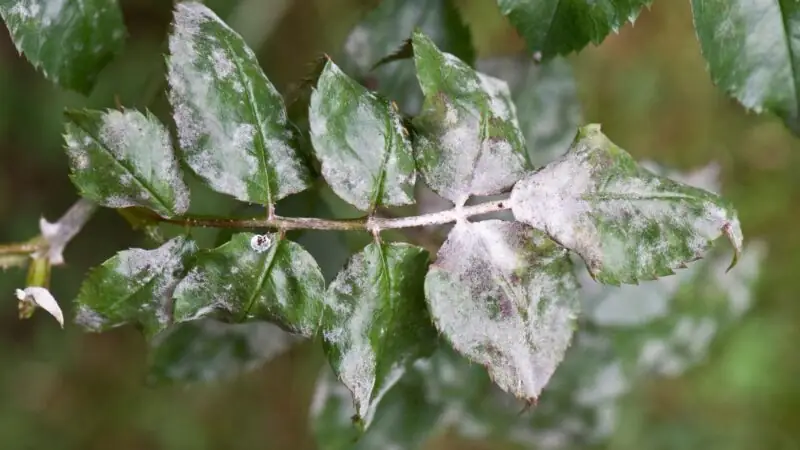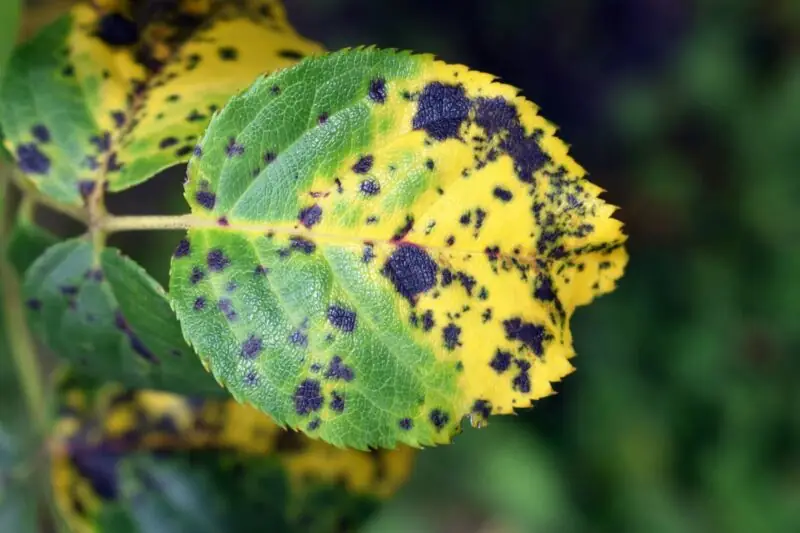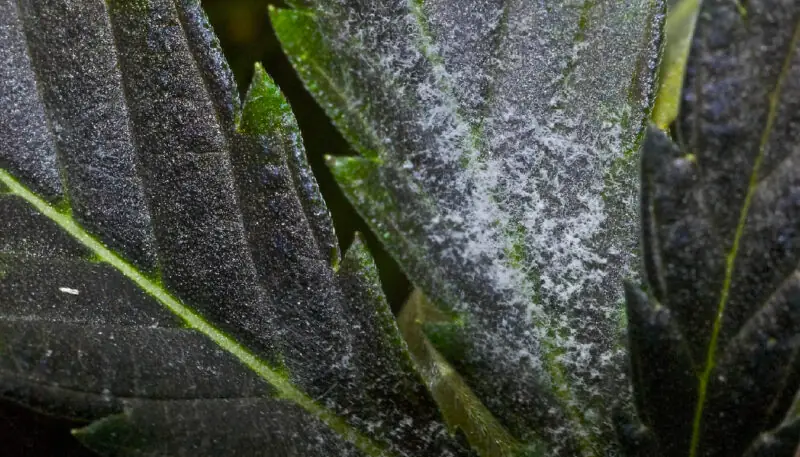Fungus on Plants: Treat Plant Fungus and HousePlant Fungal Diseases

Greetings, gardeners and plant lovers! Isn’t it just a delight to watch our different plants thrive, their lush, healthy leaves reaching for the sun? But, hang on, what’s this we see? A white dusting, spots, or maybe something more sinister lurking beneath the foliage? Yep, we’re dealing with fungus on plants, a sly little intruder that can cause diseases. Common in outdoor gardening, these fungus issues can cause leaves to wither, leading to dead plant graveyards.
Now, let’s get one thing straight – we’re not here to dwell on the problem. Instead, we’re about to embark on a deep-dive journey to fight fungal plant invaders. Together, we’ll uncover what causes the issue, how it manifests, and – drumroll, please – how we can fight it. Buckle up, folks; it’s time to become fungus-fighting superheroes, here to stand up for the common plant.
The Nature of Fungus on Plants and Common Symptoms
To get a handle on fungus that grows on our green friends, we first need to understand its nature and the kind of shenanigans it gets up to.
Common Fungal Diseases
There’s quite a motley crew of fungal diseases ready to wage war on our leafy companions. Remember the golden rule, one diseased plant with affected leaves can mean the death of the entire garden. Let’s meet some of the notorious ones.
Powdery Mildew
First up, we’ve got Powdery Mildew, a real party-crasher. It shows up uninvited in the common garden, spreading a whitish, powdery layer of fungal spores, as if your plants were caught in a flour storm. Oh, and it loves company – it won’t hesitate to hop onto neighboring plants, too.
Black Spot
Say hello to Black Spot, an infamous vandal especially fond of outdoor garden plants, and roses in particular. It’s as if your plants decided to have a go at abstract art, sprinkling dark, black spots on their leaves. This eventually leads to leaves turning yellow and dropping off, transforming your floral spectacle into a less-than-pleasant sight.
Fungal Leaf Spot
Next, we have Fungal Leaf Spot, the sly fox of plant diseases. It starts as tiny, brown, or black spots on affected leaves. But left unchecked, it can lead to leaves wilting, turning yellow, and in worst-case scenarios, causing the demise of the whole plant. A sly, ruthless fox indeed!
White Mold
In comes White Mold, masquerading your plants in a white, cottony coating. It’s especially crafty in areas with high humidity and cool temperatures, where it can stunt your plant’s growth and wreak havoc in your garden.
Botrytis
Last but definitely not least, we meet Botrytis. This baddie causes rot and blight in plants, with a reputation for spreading fast and wide, showing no mercy to any variety of plant types.
Recognizing Infected Plants
Fungal leaf spots can be spotted (pun intended) by the presence of spots on the upper leaf surfaces. These spots can vary in color, from brown and black to tan or gray, depending on the type of fungus behind the mischief.
Common Symptoms
The signs are as diverse as the fungi causing them. You might find your plant leaves turning yellow or brown, wilting, or falling off prematurely. Maybe you’ll spot blisters or patches of dead tissue on the plant leaves, or discover powdery or downy patches on the undersides of leaves.
Fungal Pathogens that Attack Plants

Just as humans have their germs, plants have their own microscopic troublemakers. These villains are the root cause of diseases in plants.
The Role of Fungal Pathogens
These mini monsters can cause a world of harm to our green babies. They are the culprit behind many plant diseases and can spread rapidly, potentially turning a flourishing garden or field into a scene of devastation. But worry not! With knowledge comes power, and by understanding this menace, we can take the necessary steps to protect our plants.
Types of Fungal Pathogens
There’s a huge number of plant pathogens out there. Some are pretty indiscriminate and can cause chaos among a wide variety of plants. Others are more selective, focusing their destructive energies on specific types of plants. Either way, knowing what kind of invader you’re dealing with is the first crucial step in managing the problem.
How Pests Contribute to Fungal Problems
Believe it or not, our plants’ problems aren’t just due to fungi alone. Enter the world of pests, the sneaky accomplices causing plants to become more vulnerable.
Fungus Gnats and Other Pests
Fungus gnats, for instance, aren’t just annoying; they can contribute to the spread of fungus. These insects, along with others like aphids and mites, can transport spores from one plant to another, facilitating an unwelcome party.
Integrated Pest Management for Fungal Control
This is where Integrated Pest Management (IPM) comes in. IPM is like the top-secret, tactical response team for pests and diseases in your garden. It involves monitoring for pests, correctly identifying them, and implementing control methods that are both effective and environmentally friendly. It’s your first line of defense in the fight against both insect pests and the spread of diseases caused by fungal intrusions.
Understanding the Impact

Plant fungus is not just a minor nuisance. It can have a significant impact on the health and vitality of our plants, causing leaves to drop like flies.
The Effects on Plant Health
Fungal diseases can cause a whole host of problems for our plants. They can lead to discoloration, wilting, and even death of plant leaves. They can stunt plant growth, reduce yield in fruit and vegetable plants, and make plants more susceptible to other stresses like drought or extreme temperatures. Understanding this impact is crucial as it highlights the importance of treating and preventing infections to keep our plants healthy and happy.
How to Fight Fungal Leaf Infections
Now, it’s time to step into the ring. How do we arm ourselves against these invaders? Let’s explore.
Treatment Methods
There are various methods to treat plant fungus, ranging from natural home remedies to commercial fungicides. The key here is to identify the type of disease affecting your plant, and then choose the appropriate treatment.
Treating Powdery Mildew
If your plants are battling Powdery Mildew, a home remedy could be a mixture of water, baking soda, and a small amount of dish soap. Sprayed onto the affected parts of the plant, this solution can help control the disease.
Treating Black Spot
Pruning off the afflicted plant material, enhancing airflow around the plant, and applying a fungicide are the best ways to treat black spot. Spraying the plant with a solution of milk and water could be a natural solution.
Treating Fungal Leaf Spots
Remove and destroy infected leaves, improve air circulation around the plant, and consider applying a fungicide if the infection is severe. Burn the leaves if you have to.
Treating White Mold
Treating White Mold involves pruning and removing infected plant material, keeping the area around the plant clean, and applying a fungicide if necessary. It’s also crucial to manage soil conditions and moisture levels, as White Mold thrives in cool, wet environments.
Treating Botrytis
In the fight against Botrytis, a combination of good gardening practices and the judicious use of fungicides can bring back your plant to its former glory. Removal of affected plant parts and ensuring good air circulation around the plant can also help keep this beast at bay.
Preventing Powdery Mildew and Other Fungal Diseases
Prevention, as they say, is better than cure. While treatments can help fight existing infections, taking steps to prevent infection in the first place is the smart move. Your plants need to be strong to fight the invaders, keep them healthy by providing proper care, including the right amount of sunlight and water. Regularly inspect your plants for early signs of disease and act swiftly if you spot anything suspicious.
Rot and Blight: Severe Manifestations of Infection
While all diseases can wreak havoc, rot and blight are particularly nasty manifestations. They can quickly transform a healthy plant into a suffering one.
Understanding Rot and Its Causes
Rot, as the name suggests, involves the rotting or decaying of parts of the plant. It’s usually caused by a fungal infection and can affect all parts of a plant, from the roots to the leaves. High humidity, poor air circulation, and overwatering are common culprits that can invite these pathogens, causing rot.
Understanding Blight and Its Causes
Blight is another severe form of fungal disease, characterized by the rapid browning and death of plant tissues. It can spread swiftly and wipe out entire plant populations in a short time. It’s usually caused by fungi that thrive in wet conditions, so managing your watering habits and ensuring good drainage can help prevent blight.
FAQs
Let’s now turn to some frequently asked questions about fungus on plants.
The treatment for plant fungus largely depends on the type of fungal disease affecting the plant. It may involve removing and destroying infected parts of the plant, improving air circulation around the plant, or applying a suitable fungicide. Always remember to identify the disease correctly to select the most effective treatment.
Common diseases include Powdery Mildew, Black Spot, Fungal Leaf Spot, White Mold, and Botrytis, among others. Each of these diseases presents differently, so it’s essential to familiarize yourself with their symptoms to promptly recognize and treat them.
Prevention involves a combination of good gardening practices, such as providing your plants with the right care, regular inspections for early signs of disease, and ensuring proper air circulation around the plant. It’s also essential to manage watering and avoid creating conditions that favor fungal growth.
Pests like fungus gnats, aphids, and mites can carry spores from one plant to another, thereby spreading diseases. By managing these pests effectively, you can help reduce the incidence and spread of fungal diseases in your garden or home.
Integrated Pest Management (IPM) involves monitoring for pests, accurately identifying them, and using control methods that are both effective and environmentally friendly. It’s an efficient way to manage both insect pests and fungal diseases, helping to keep your plants healthy.
Conclusion
So there you have it, folks! Our deep dive into the world of fungus on plants. As you can see, dealing with fungal diseases involves understanding what they are, recognizing their symptoms, and knowing how to treat and prevent them. It’s a bit of a challenge, sure, but with a little patience and care, you can protect your plants from these foes. Remember, a healthy plant is a happy plant, so keep those green thumbs working!